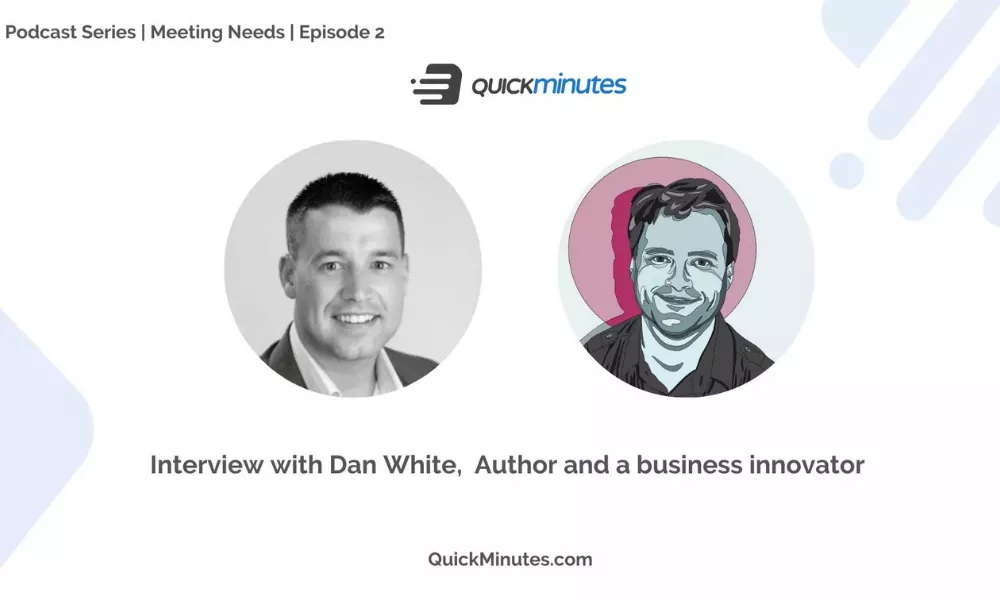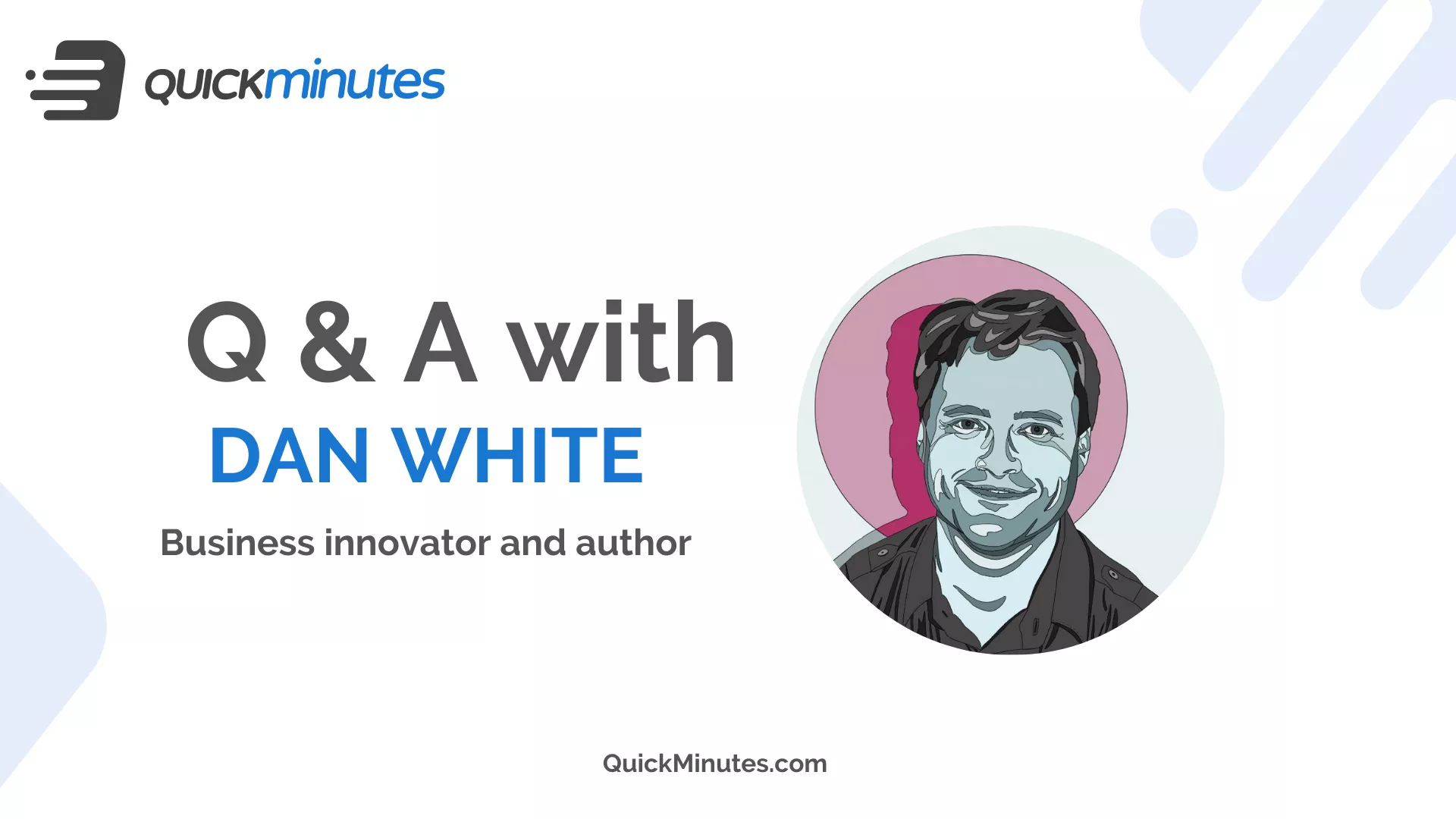
Q&A with Dan White
Dan White - Business innovator and author of two best selling books: The Soft Skill Book and The Smart Marketing Book
His ideas about the science of marketing, and the art of succeeding within the business, have influenced generations of young professionals.

In his early career, Dan learnt how to build client relationships and successful teams. He went on to become Chief Marketing Officer for the famous research company Millward Brown, responsible for product development, marketing, and internal communications across Europe. Dan then turned his attention to capability development as Head of Expertise for Kantar’s insights division in the UK. In this role he created a blueprint for professional development, identifying what someone within a professional service company needs to learn in order to succeed and the best way for them to gain the necessary skills and knowledge over the course of their career.
Dan has an uncanny ability to take complex ideas and make them easy to understand and act upon. His hand-drawn graphics are praised for their elegance, charm and simplicity but most of all for how they help the reader appreciate and remember the underlying concepts.
Q1. How would you describe your journey from a professional environment to an author?
It's been a fun and an interesting journey. I left university and I went straight into a job, so no breaks. I worked 20 years with essentially the same company. Obviously, over the years, things happened to the company, got bought, and then they got merged, etc. But I was effectively with that company, grew up with it, and ended up climbing that kind of corporate ladder. With increased responsibilities, bigger projects, bigger teams, and bigger budgets, it was a good ride. But I think like a lot of people, when they get into their 50s, they start to think well, okay, you know, is that what my burning ambition is? But I want to carry on doing this for another 10-20 years or something? Or do I want a little bit of a break? So that's when I got into, I suppose a combination of writing, but also illustrating and that's what I focused on after I left.
Q2. Tell us a little bit about the transition period. Is it something that happened overnight? Do you hit on two of your passions in terms of writing and illustration?
No, it wasn't that I loved illustration and frameworks and conceptualising things. What actually happened was over the course, I was a bit of a magpie through that time about my ideas,frameworks, acronyms, checklists, and tips and tricks. I had a plastic notebook and I always scribble with pencil or pen to fit ideas or frameworks or things. I made notes to myself, you know what I mean? I would put sticky markers to remember that it's a good page and I must come back to that. I had this pile in the loft and my wife wasn't that happy with it because she was like, why are you keeping all this old stuff from 20 years ago? It was a pile of 50 sorts of books. I had started to bring some of those alive and towards the end of my time, within my corporate life, I was using them more and more. I was drawing them up and I found that people liked them, well, they found them useful. By this time I've gotten into training, I realised that illustration helps me remember the point, that is when I realized now's the time, I'm gonna put them together in two books. In fact, I have two books in mind.
The research honestly I did at the time I did the notes and the scribbles and thought up the frameworks and drew them and stuff for myself. This was me, this is a coworker. Next time I come across this situation or this challenge or whatever, I will have a head start because I've got my framework. That was the time I realised what I found useful for myself was useful for other people. So I thought, well, maybe that's the thing I can do uniquely.
Q3. Can you give a more practical example of a one click kind of framework or illustration that you say, ‘this is good and I can use it to communicate as well as execute or just fill in the gaps’?
Yeah. Well, I'm a physical person, and a lot of people are. But when you think about business books, I've got a whole pile behind me, you know, marketing and sort of soft skills books. Some of them are literally pure text. They are just text from start to finish. So there's one here, it's a good book. It is obviously not my book, I should be plugging my book. But when you look at it, what can you see?
There's nothing but words. Now, obviously, words are important. But I'm a visual person, I struggle to read a whole book without some pictures. Okay, maybe I'm like a kid. But, you know a lot of people do not like reading through whole books unless it's a novel or something. I've got this idea that with Bradway, if you want to build a brand, the important element of building a strong brand: is having consistency in your marketing overtime. So using the same logo, using the same colours, using the same character style, the more you can have consistency, the more it helps build a powerful, memorable entity in the brain.
Imagine you're in a cave and it's been around for years and years. Now, if the water drips down through that cave, through the ceiling of the cage, all over the ceiling the cave won't change over at the checkpoint at all right? But if the drips keep coming and dripping down at one particular point, probably because it started with a little rock that's a tiny, little bit lower than the rest of the grip in exactly the same place over years and years. You build a static tight, and a kind of thought I felt like quite a useful analogy. I don't know if this will work someday. Ah, that's a good way of remembering why your marketing needs to be consistent and overtime bill because it'll build because the deposits and the way it works in the brain, it'll just make it stronger and stronger as the mineral deposits grow the stalactite in the same way as the brain develops neural connections.
Q4. Somebody who is at a senior level within your organisation, how much time as a general rule of thumb, should you allocate to stepping back?
It's a very good question and that's hard to answer because obviously, there are lots of jobs, people are very busy, they've got a lot of money to do. So it's, it's hard to convince people that it's worth stepping back and thinking, but I do think there is actually a time benefit of doing it. In fact, the more you step back and think about something at the start, the more likely you are to do it and do it quickly and not have to redo it. So actually, it does pay back, it's the early investment that is difficult when you're busy. I'm a big believer that just a little bit of thinking, when you first think we need a meeting, not just you but anyone who's involved in that meeting. There's a bit of a curse, a bit of a problem in a lot of businesses where meetings aren't efficient, they're not thoughtful. You could save both yourself and your whole company a lot of time if you go. I'm a very practical person. I do like my ideas and that analogy I talked about is quite a fun one. But actually, I'm a believer, if there was a good process for something, a step protocol for doing something that's been well proven, at least try that.
For meetings, I have got a couple of very nice frameworks that I think I just started to use myself at a point through my career and the concept. I first learned about it and it transformed the meetings completely.
Q5. Could just give an example of your meeting techniques that you're currently employing? Are there any visualisation tricks that you have that could help us?
Yeah, actually, this is less about visualisation, although I have drawn a little cartoon for it. But it's more about the actual framework, because that's my other passion: frameworks and illustration. The meetings are my favourite because it's transformational and I think it's two stages. The two stages you should use a framework are, firstly, when you're planning the meeting, thinking about the meeting beforehand. I think the most important thing for planning a meeting is being really clear from the start. Is that what the outcome needs to be? What do we need to achieve by the end of that meeting? Everyone has a fully shared understanding of issues and that's fine, you just have to be clear.
Let us think about the outcome,that will naturally flow into our roles. So who therefore needs to be involved? What do each of them need to contribute? So that really helps, because so many meetings happen we'll just have everyone on the team, or just anyone we can think of will come to this meeting for an hour and you've wasted 10 times your people's time. Obviously, the rule of thumb is the minimum number of people that are needed for that outcome.
Secondly, what is your P? P would be preparation, if any needs to be done, like, who needs to do what before the meeting? That's important, then how long will we need? You have to guess how long you'll need for that and obviously, when do we need to do it by? It's actually the easiest and most least important, which is just what the subject of it is, just label the thing you put up at the top of the invitation.
Q6. Where can I find your books? What are your main pieces that you have available?
A good place to start. It's called smartmarketing.me, a website. I've actually just given you a flavour for what I do. The limitations, the frameworks with a marketing spin, but a lot of it is more general than the marketing on the website. The books themselves are available on Amazon or bookdepository.com. Basically, those are good bets. But the easiest way to find the links is to just go to the website, and there are links in the book section.
Well, I'm a bit old school . The only reason I went with this publisher is I really liked the format and it's small. I like the fact that if you look, it's got one of these elastic, close things that keep it closed, and a page marker, which just reminded me of my own, where it came from. It's going to be a practical pocket guide, keep it in your bag or on your shelf and you just refer to it when you've got a new college. It just felt right but of course, there are also electronic and Kindle versions of them as well of the two books as well.
Podcast Series